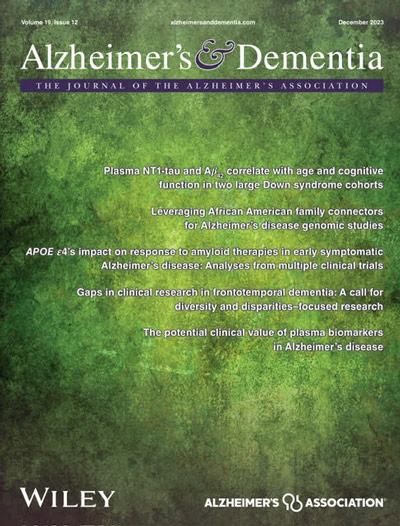The Alzheimer's disease-associated complement receptor 1 variant confers risk by impacting glial phagocytosis
Abstract
INTRODUCTION
Genome-wide association studies have implicated complement in Alzheimer's disease (AD). The CR1*2 variant of complement receptor 1 (CR1; CD35), confers increased AD risk. We confirmed CR1 expression on glial cells; however, how CR1 variants influence AD risk remains unclear.
METHODS
Induced pluripotent stem cell-derived microglia and astrocytes were generated from donors homozygous for the common CR1 variants (CR1*1/CR1*1;CR1*2/CR1*2). CR1 expression was quantified and phagocytic activity assessed using diverse targets (Escherichia coli bioparticles, amyloid β aggregates, and synaptoneurosomes), with or without serum opsonization.
RESULTS
Expression of CR1*1 was significantly higher than CR1*2 on glial lines. Phagocytosis for all targets was markedly enhanced following serum opsonization, attenuated by Factor I-depletion, demonstrating CR1 requirement for C3b processing. CR1*2-expressing glia showed significantly enhanced phagocytosis of all opsonized targets compared to CR1*1-expressing cells.
DISCUSSION
CR1 is critical for glial phagocytosis of opsonized targets. CR1*2, despite lower expression, enhances glial phagocytosis, providing mechanistic explanation of increased AD risk.
Highlights
- Induced pluripotent stem cell (iPSC)-derived glia from individuals expressing the Alzheimer's disease (AD) risk variant complement receptor (CR) 1*2 exhibit lower CR1 expression compared to those from donors expressing the non-risk form CR1*1.
- The iPSC-derived glia from individuals expressing the AD risk variant CR1*2 exhibit enhanced phagocytic activity for opsonized bacterial particles, amyloid-β aggregates and human synaptoneurosomes compared to those from donors expressing the non-risk form CR1*1.
- We suggest that expression of the CR1*2 variant confers risk of AD by enhancing the phagocytic capacity of glia for opsonized targets.


 求助内容:
求助内容: 应助结果提醒方式:
应助结果提醒方式:


